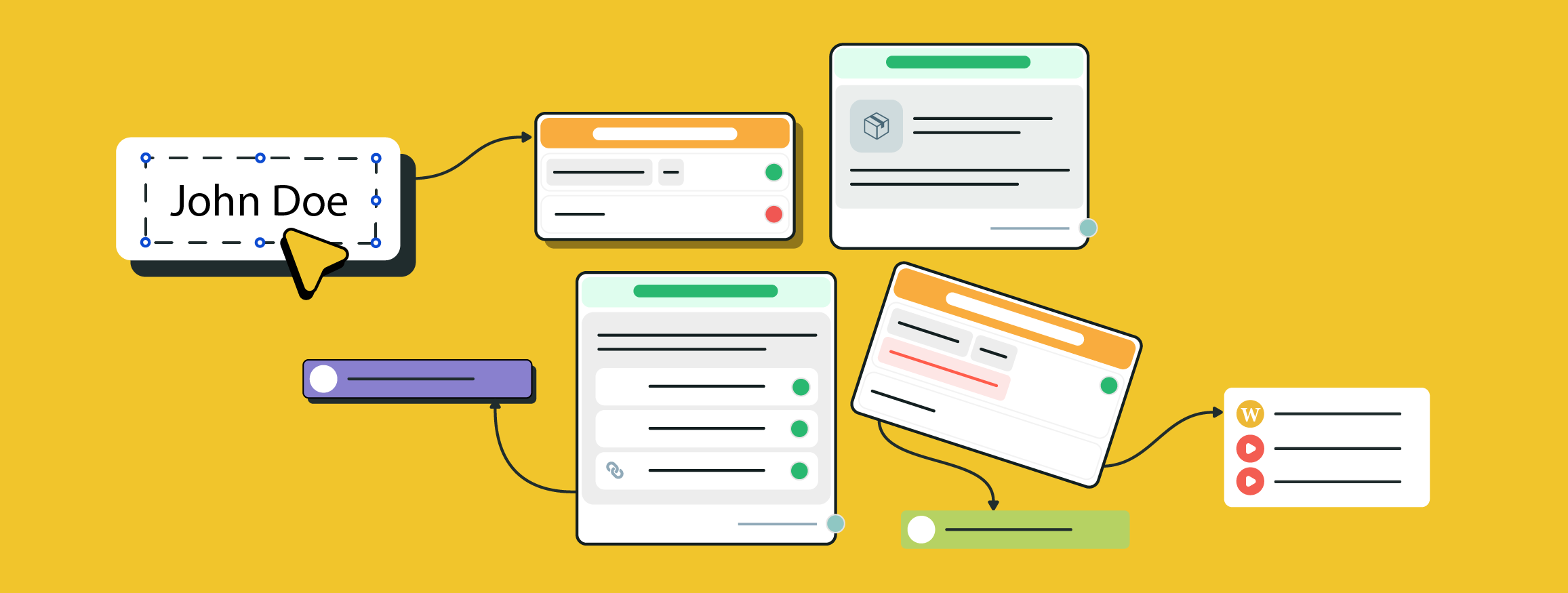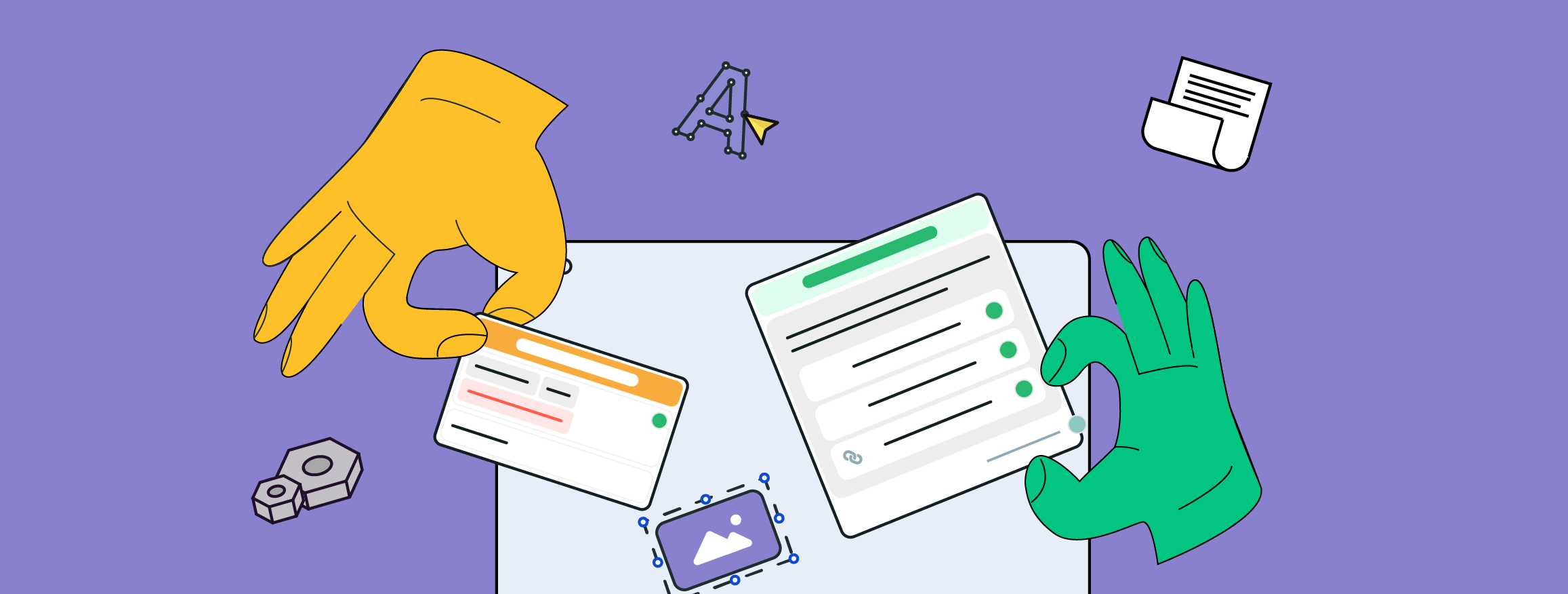Objection handling is managing objections potential customers have before, during, or after a sales pitch. These concerns can be related to pricing, timing, and product features. Objections become obstacles to purchasing products from a specific company.
In this article, we’ll uncover the importance and types of objection handling. We’ll also review seven sales objection-handling techniques.
Why is objection handling important?
Some prospects can have concerns, objections, and arguments for not buying your product. That’s why sales representatives need to be ready to deal with those objections and find counterarguments to prospects’ statements. Objection handling enables your team to change opinions about your product to positive ones, show value, explain the price, features, etc.
If your salespeople can successfully manage prospects’ concerns, they can help these people understand your product better. You have the chance to explain everything they need and erase hesitations they have. Objection is a part of the selling process, and sales reps should be ready to deal with it. For sure, concerns are the obstacles to converting a lead into a client. They make it more difficult and longer. However, if sales reps succeed in changing opinions, they can still move these leads down the sales funnel.
When prospects don’t buy your product for a long time, it means that they have some thoughts about price, value, benefits, features, and value. However, your salespeople shouldn’t let these leads go. They should bring proof that your product works and unveil its value. For instance, if you sell cosmetics and a prospect wants to buy a lip tint but isn’t sure about the tone, provide a consultation. Your sales rep can help choose the most suitable one.
The ability to handle objections influences the success of your business. If your salespeople manage to retain these prospects and encourage them to buy your products, it’ll positively impact your revenue. You’ll have a bigger customer base, increased ROI, and improved customer satisfaction.
Now that you know the importance of objection handling, it’s time to discover the types.
Types of Sales Objections
Sales objections can be divided into four main groups. In this section, we’ll review each group in detail so that you can identify customers’ concerns and find ways to deal with them.
- Lack of budget. Prospects' first and most common objection is “Your product is too expensive.” People are usually concerned about the financial risks they take when they purchase expensive products. If the main reason for a potential customer not buying the product is budget, it can sometimes take time for sales reps to encourage them to complete a purchase. However, salespeople can still do it by implementing the right approach. They need to demonstrate the real value of your product and show that it’s worth paying more for better quality, more features, or faster results. Your team should uncover your competitive advantage and position your product as the best among all available options.
- Lack of trust. The second concern of prospective customers is brand awareness. When communicating with sales reps, prospects often say they can’t buy from your company because they’ve never heard of it. There should be trust and brand recognition. For sure, everyone wants to buy from brands they know and recognize. When you have a warm call, it’s easier for salespeople to establish trust. If prospects have interacted with your website, seen your ads, or checked your products, your sales rep just needs to remind them about it. However, it’s harder to build trust when leads hear about your company for the first time. They need to learn about your brand and the products you offer. That’s why your sales team must prepare a powerful sales pitch covering your product's value. Your salespeople also need to talk about your authority in the industry.
- Lack of need. Some leads don’t understand why you offer this or that product and how it can help in their situation. If such a scenario happens, you should qualify these prospective customers to discover their problems, needs, preferences, etc. Ask them open-ended questions so that they can fully understand their issues and find out whether your product fits as a solution. If yes, demonstrate the value of your product for this particular situation. Find a personalized approach to every prospect so they can see your solution's benefits.
- Lack of urgency. The last type involves timing. The first task of your sales team here is to find out whether the time is really the issue or if prospects just want to end the conversation. Your salespeople should ask questions about why the solution isn’t relevant at the moment. It will help you determine whether time is the main reason for not buying your product. Sales reps should also ask about the issues that are a priority for them. Time isn't the main reason for prospects' concerns if the answers are vague.
Now that you know the types, it’s time to review the most effective sales objection-handling techniques. They will help you increase the number of conversions during conversations with leads who need clarification on their purchase.
7 Sales Objection Handling Techniques
In this section, we’ll uncover how to overcome customers’ concerns and sell products successfully. Let’s dive in.
- Listen to your prospects attentively. When people have sales objections, it’s essential not only to talk but also to listen. Proactive talking can’t help you figure out prospects’ reasons and arguments for not buying from you, but listening can. Ask open-ended questions to identify customers’ concerns and understand their needs. Listen to every word they say to understand their point of view. Avoid interrupting leads when they share their concerns with you. Give them time to speak up about their problems and objections related to your product.
- Repeat their concerns. After potential customers finish their speeches, you need to repeat back what they said. It’ll help you make sure that you understand everything right. Besides identifying potential clients’ reasons for rejecting your offer, you can show you care and value them. It will positively influence their trust in your brand.
- Acknowledge their objections. Once you understand why prospects refuse the product, you need to show empathy and demonstrate that you acknowledge their point of view. However, this doesn’t mean you should continue your sales pitch or recommend your competitor’s solution. You need to be wise when choosing words. Show them empathy by saying “I understand your point of view.” Let’s imagine that you sell photo presets, and a prospect is concerned about how to use them if he has never done it before. In this situation, you can say “I understand your concerns, but our team of specialists will help you start using the presets and provide you with all the necessary tutorials.” This way, you show that you acknowledge their point of view and provide a solution.
- Ask questions to continue the conversation. Sometimes prospects share their concerns and are unwilling to continue the conversation. To prevent potential customers from leaving, you need to ask open-ended questions. This way, the conversation will continue, and you’ll be able to find out more about this lead’s problems and point of view. The more concerns they share, the more time you have to close a deal. Use the information provided to your advantage and give counterarguments based on what you hear.
- Provide social proof. Use information about your customers who successfully implemented your solution. You need to find success stories of clients with similar concerns and share them with your prospects. It will demonstrate to them that the fear they have is unjustified.
- Give some space for leads to think and connect with them at a specific time. When your prospect needs more time to weigh the advantages and disadvantages of your product, you need to determine the time to follow up. Discuss the time and date when you can call these leads back to listen to their decision. Mention that they can reach you anytime if they have some unanswered questions about your product. Make sure to provide detailed answers when they make up their decisions.
- Prepare for objections. Concerns and points of view from customers happen often. So it’s better to get ready for them. You can use previous conversations with customers to make up a list of concerns people frequently have with your product. Prepare counterarguments for thoughts potential customers might have on your product. It will help you avoid pauses, wrong language, or unnecessary statements. You should talk to the point to convince buyers that the team will help them with onboarding, features, the technical side of the product, etc.
Congrats, now you know what objection handling is and why it’s essential. Hope that the list of techniques above will serve you as a roadmap to successful sales.
References:
- This article unveils the importance of objection handling and provides some examples.
- In this article, you’ll find objection-handling steps, tips, and scripts.
Check out our blog to find more tips to boost sales
Last Updated: 12.09.2023





or